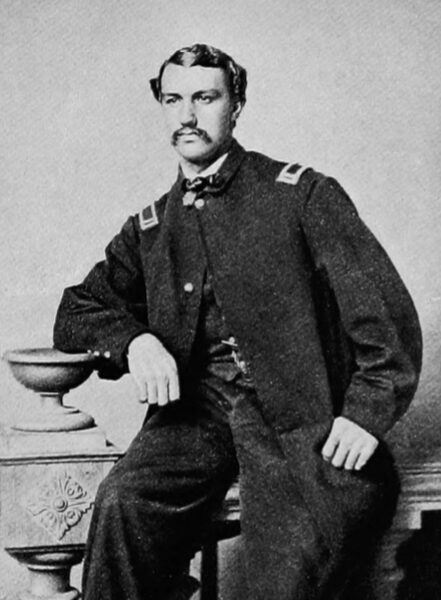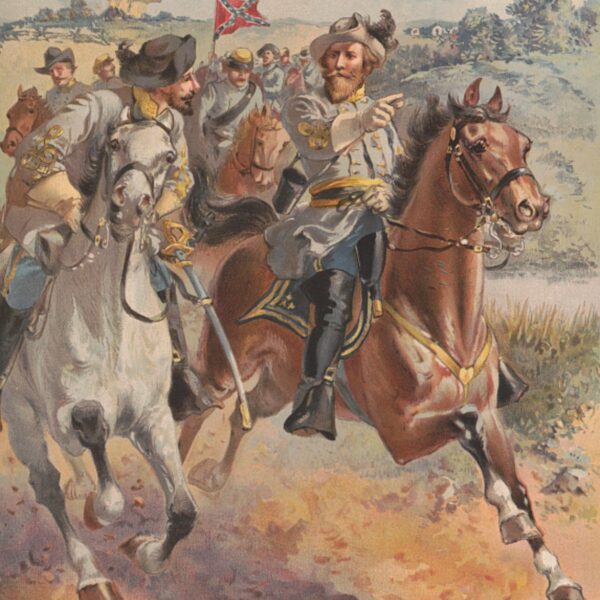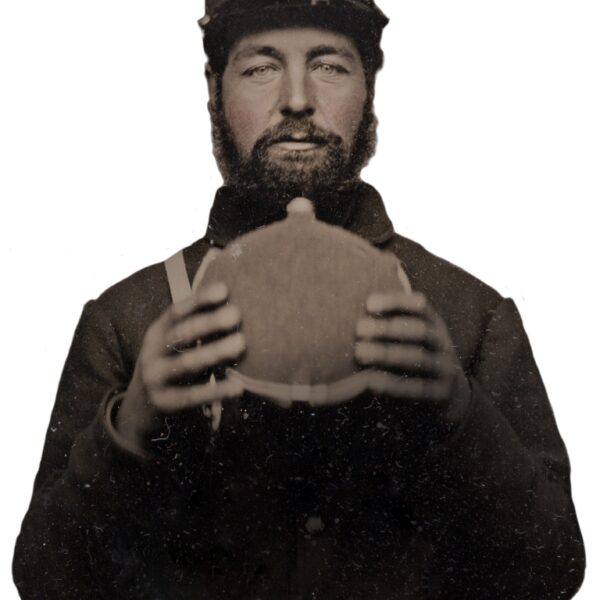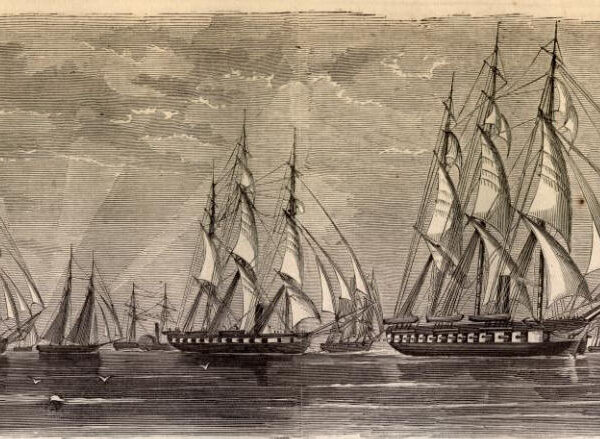 The Books & Authors section of our Winter 2019 issue contains our annual roundup of the year’s best Civil War titles. As usual, we enlisted the help of a handful of Civil War historians and enthusiasts, avid readers all, and asked them to pick their two favorite books published in 2019. Below are their selections. We also gave them a chance to name an additional title or two that they’re looking forward to, books that either were released this year or are coming out in print soon. Check those out in the issue.
The Books & Authors section of our Winter 2019 issue contains our annual roundup of the year’s best Civil War titles. As usual, we enlisted the help of a handful of Civil War historians and enthusiasts, avid readers all, and asked them to pick their two favorite books published in 2019. Below are their selections. We also gave them a chance to name an additional title or two that they’re looking forward to, books that either were released this year or are coming out in print soon. Check those out in the issue.
A. Wilson Greene
Top Pick: It is surprising that despite the passage of 15 decades, a number of important Civil War military actions and campaigns have never found their voice. Such was the case for the several 1864 engagements in eastern North Carolina until Hampton Newsome published The Fight for the Old North State: The Civil War in North Carolina, January–May 1864 (University Press of Kansas). Coastal North Carolina always played a critical role in the larger Virginia theater. Militarily, the ports and railroads exerted a huge influence on the viability of the Army of Northern Virginia; politically, this portion of the state remained fertile ground for undermining Confederate solidarity. Newsome covers the offensives against New Bern, Plymouth, and Washington with the same incisive analysis and fluent prose that made his first book, Richmond Must Fall: The Richmond-Petersburg Campaign, October 1864(2013), such a success. His coverage of the infamous hangings of 22 Union prisoners in Kinston in February 1864 is the best ever written. Relying on a vast array of primary sources, including scores of contemporary newspapers, Newsome’s scholarship provides a model for any campaign study. The University Press of Kansas enhanced the narrative by providing many excellent maps and numerous photographs and illustrations. In short, The Fight for the Old North State is a superb book on all levels and richly deserves recognition as the genre’s best of the year.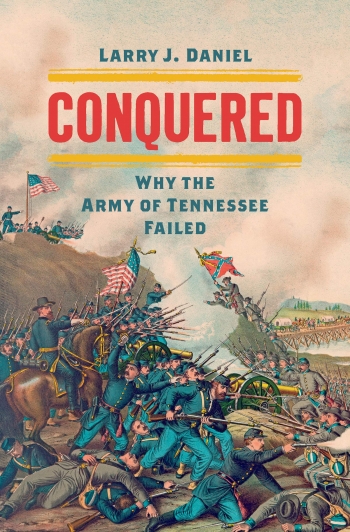
Honorable Mention: For half a century, readers interested in the star-crossed career of the Army of Tennessee have turned to Thomas L. Connelly’s masterful two volumes (Army of the Heartlandand Autumn of Glory) published between 1967 and 1971. Larry J. Daniel, an unquestioned expert on the Confederacy’s most important western army, has now provided a fresh and thoughtful new account. Conquered: Why the Army of Tennessee Failed(University of North Carolina Press) is a comprehensive review of the frequent failures and rare successes that marked this organization’s trajectory of defeat. Combining in-depth research with crisp writing, Daniel renders compelling analysis that recommends this book to everyone interested in the war’s western theater.
A. WILSON GREENE RETIRED FROM A 44-YEAR CAREER IN PUBLIC HISTORY AND BATTLEFIELD PRESERVATION IN 2017. HE IS AT WORK ON A THREE-VOLUME HISTORY OF THE PETERSBURG CAMPAIGN. THE FIRST VOLUME, A CAMPAIGN OF GIANTS, WAS PUBLISHED BY THE UNIVERSITY OF NORTH CAROLINA PRESS IN 2018.
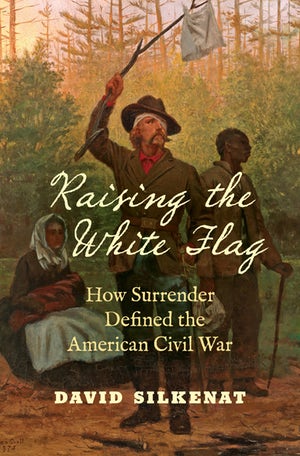
Top Pick: As David Silkenat points out in Raising the White Flag: How Surrender Defined the American Civil War(University of North Carolina Press), surrenders bookended the Civil War. Major Robert Anderson became one of the Union war’s first heroes after his stalwart garrison capitulated to the Rebels at Fort Sumter. Four years later, a string of surrender meetings from Appomattox to Oklahoma brought the rebellion to a close. Surrenders also punctuated the conflict’s battles. Between 1861 and 1865, thousands of individual soldiers raised the white flag rather than risk death or injury. Skillfully blending cultural and military history, Silkenat’s engrossing narrative supplies a revealing look at the meaning and logic of surrender in the Civil War era. Deftly tracking from theater to theater, the author demonstrates how the idea of surrender influenced battles, campaigns, and the very structure of the war. This is a wholly original, well-written book that engages many of the field’s key issues and important questions.
Honorable Mention: In the last decade, scholars have debated whether Civil War veterans embraced or resisted sectional reconciliation. In his smart and original book, War, Memory, and the 1913 Gettysburg Reunion(Kent State University Press), Thomas R. Flagel reaches beneath these debates to reveal what Gettysburg’s 1913 reunion actually meant to the veterans who attended. With a keen eye for detail, Flagel renders the “peace jubilee” reunion at Gettysburg anew—situating the event in the context of Progressive-Era reform and veterans psychology. Most veterans did not care about the speechifying taking place on stage under the big tent; they came not to engage the national politics of Civil War memory, but instead to seek closure. This moving, well-researched book is one of the best contributions to the memory literature in recent years.
BRIAN MATTHEW JORDAN IS THE AUTHOR OF MARCHING HOME: UNION VETERANS AND THEIR UNENDING CIVIL WAR(LIVERIGHT, 2014), A PULITZER PRIZE FINALIST, AND CO-EDITOR OF THE WAR WENT ON: RECONSIDERING THE LIVES OF CIVIL WAR VETERANS(LOUISIANA STATE UNIVERSITY PRESS, 2020). HIS NEXT BOOK, ENDURING CIVIL WAR: LIFE, DEATH, AND SURVIVAL IN A UNION REGIMENT, IS FORTHCOMING FROM LIVERIGHT/W.W. NORTON.
Ethan S. Rafuse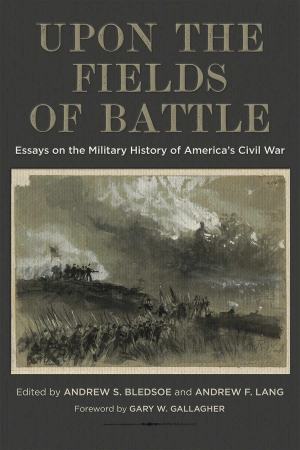
Top Pick: I really like essay collections, and the end of 2018 saw the appearance of an exceptional one: Andrew S. Bledsoe and Andrew F. Lang’s Upon the Fields of Battle: Essays on the Military History of America’s Civil War(Louisiana State University Press). The value of essay collections is that they can offer interesting takes on a wide variety of topics, and this work certainly does that. Whether one is interested in operational and tactical matters, guerrilla warfare, how particular leaders and battlefield events have been remembered, or such seemingly minor subjects as the construction of orders in the field, there is a lot here to like. Ken Noe’s essay on the effect of weather on the conduct of the Peninsula Campaign, Brian Matthew Jordan’s on the 107th Ohio Infantry, and John Hennessy’s on the occupation of Fredericksburg are particular highlights, but all of the essays reward careful reading, as they not only inform but provide plenty of grist for the mill of historical debate.
Honorable Mention: In Conquered, Larry Daniel offers compelling analysis of why the Army of Tennessee, commanded in turn by generals Braxton Bragg, Joseph E. Johnston, and John Bell Hood, struggled to achieve success during the Civil War. Effectively providing perspectives from both the top-down and bottom-up is no easy trick, but Daniel pulls it off superbly.
ETHAN S. RAFUSE IS PROFESSOR OF MILITARY HISTORY AT THE U.S. ARMY COMMAND AND GENERAL STAFF COLLEGE.
Gerald J. Prokopowicz
Top Pick: Raising the White Flag by David Silkenat was the book that captured my imagination in 2019. Many of us were first drawn to Civil War history, or military history more broadly, by the desire to understand how and why groups of human beings could sometimes suspend the ordinary rules of social behavior and engage in intraspecies killing. What Silkenat points out is that not all rules are suspended; he found that a quarter of all Civil War soldiers surrendered at some point in the war, sometimes at moments that one would hardly expect (Union soldiers on Cemetery Ridge surrendering to the few Confederates who charged all the way there on July 3, 1863, for example). We’ve all read about surrenders, from individual soldiers up to whole armies, but Silkenat is the first to focus directly on the liminal, and often dangerous, moment of transition from soldier to prisoner of war. The book asks (and answers) fresh and intriguing questions about the meaning and mechanics of surrender, while tracing their evolution over four years of war. It’s hard to imagine how one book could be so relevant to so many different perspectives, from those of nuts-and-bolts battlefield historians who want to know what happened on the ground, to followers of the “dark turn” in Civil War history, to readers wrestling with contemporary issues of race and memory.
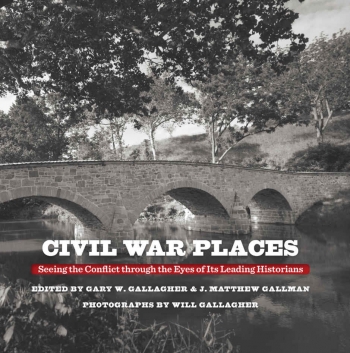 Honorable Mention: Civil War Places: Seeing the Conflict through the Eyes of Its Leading Historians(University of North Carolina Press), edited by Gary W. Gallagher and J. Matthew Gallman with photographs by Will Gallagher, is a beautiful book. Twenty-five striking black-and-white photographs illustrate the 25 brief essays on significant places related to the war, each written by someone who is already familiar to anyone reading this magazine. What makes this a favorite, besides its esthetic appeal, is the sense of discovery from reading about the places that the writers chose, both famous and obscure, from Shiloh Church and Burnside’s Bridge to a remote West Virginia hilltop or a Civil War veterans cemetery in Los Angeles. Reading the insights of the essayists made me anxious to get behind the wheel and see every one of these places, whether for the first or 50th time.
Honorable Mention: Civil War Places: Seeing the Conflict through the Eyes of Its Leading Historians(University of North Carolina Press), edited by Gary W. Gallagher and J. Matthew Gallman with photographs by Will Gallagher, is a beautiful book. Twenty-five striking black-and-white photographs illustrate the 25 brief essays on significant places related to the war, each written by someone who is already familiar to anyone reading this magazine. What makes this a favorite, besides its esthetic appeal, is the sense of discovery from reading about the places that the writers chose, both famous and obscure, from Shiloh Church and Burnside’s Bridge to a remote West Virginia hilltop or a Civil War veterans cemetery in Los Angeles. Reading the insights of the essayists made me anxious to get behind the wheel and see every one of these places, whether for the first or 50th time.
GERALD J. PROKOPOWICZ IS A PROFESSOR OF HISTORY AT EAST CAROLINA UNIVERSITY IN GREENVILLE, NORTH CAROLINA, AND HOST OF THE PODCAST CIVIL WAR TALK RADIO.
Kevin M. Levin
Top Pick: David Silkenat’s Raising the White Flag is a reminder that there still is room for new and innovative studies in the field of Civil War history. The book explores surrenders throughout the conflict, from Colonel Robert Anderson’s at Fort Sumter in April 1861 to General Robert E. Lee’s at Appomattox Court House four years later. The author analyzes surrenders (large and small) to better understand deeper questions having to do with the scale and limitations of acceptable violence. Silkenat concludes, “Civil War soldiers and officers believed they were fighting in a civilized war, one in which soldiers had the right to surrender and the expectation of humane treatment as prisoners.” Of course, this did not always extend to black Union soldiers on battlefields such as the Crater at Petersburg, Virginia, and at Fort Pillow, Tennessee. The final chapter offers a fascinating overview of the contested nature of Civil War surrender sites such as Appomattox and Bennett Place and the struggle to bring interpretation at these sites more in line with recent scholarship’s emphasis on emancipation and the end of slavery, and away from a celebratory Lost Cause narrative.
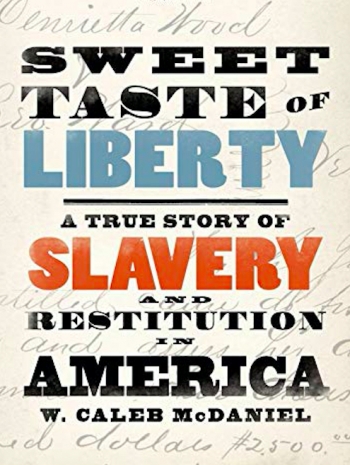 Honorable Mention: The Civil War era serves as the backdrop to the remarkable story of Henrietta Wood, who was born into slavery and freed by her owner in 1848 before being kidnapped in Cincinnati and brought back into bondage seven years later by horse breeder Zebulon Ward. Wood remained enslaved until the end of the Civil War, but used her freedom to sue Ward for compensation in 1868. Her perseverance eventually resulted in court-ordered damages amounting to $2,500. In Sweet Taste of Liberty: A True Story of Slavery and Restitution in America(Oxford University Press), historian W. Caleb McDaniel relies heavily on two interviews that Wood gave during her lawsuit to weave a deeply rich story that reveals her determination to secure her freedom and punish her former owner. This beautifully written book is a must read.
Honorable Mention: The Civil War era serves as the backdrop to the remarkable story of Henrietta Wood, who was born into slavery and freed by her owner in 1848 before being kidnapped in Cincinnati and brought back into bondage seven years later by horse breeder Zebulon Ward. Wood remained enslaved until the end of the Civil War, but used her freedom to sue Ward for compensation in 1868. Her perseverance eventually resulted in court-ordered damages amounting to $2,500. In Sweet Taste of Liberty: A True Story of Slavery and Restitution in America(Oxford University Press), historian W. Caleb McDaniel relies heavily on two interviews that Wood gave during her lawsuit to weave a deeply rich story that reveals her determination to secure her freedom and punish her former owner. This beautifully written book is a must read.

